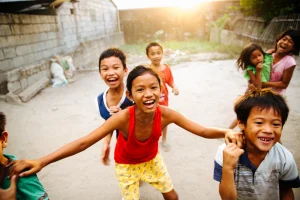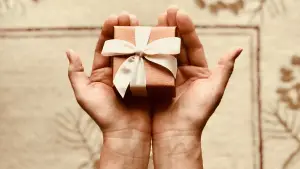COVID-19 has ravaged across the world without respecting any geographical boundaries, and irrespective of any caste, colour, religion, or ethnicity has whirlwinded the socio-economic perpetualites of the world to a great extent. Apart from the health and economic adversities of the virus, the pandemic also gave birth to its many new and distinct socio-economic imbalances which had a derogatory effect on the ethno-homogeneity of our society to a different statute. What about social distancing and COVID-19 in India?
Problems Caused by COVID-19
Problems related to COVID-19 have been the observation of many activist groups and sociological think-tanks, that apart from the uniform physical and economic yard marks, COVID-19 has started creating diversified problems in relation to societal co-existence to many countries where the economic benchmarks are not optimum as per internationally measured index parameters.
Poverty, illiteracy, partial system of public policies and an incompetent government administrative machinery has aggravated the pandemic situation leading to a high magnitudinal sociological and civic unrest among the people of these nations. The reasons arguably being that of caste and ethnic politics coupled by gender and linguistic differentiations.
Social Problems in India
Now, if we analyse the situation of India in particular, the magnitude of elevating social problems amalgamating with the immediate economic effect of COVID-19 in India, has wrecked the clustered communities of the world’s largest democracy real hard. However, this has been the case for most of the Southeast Asian and African nations.

According to the statistical report published by Oxfam upon India in the year 2019, a polarizing tendency of the consumption of economic and wealth assets by the privileged few has been observed. The trend is uniform to the present global scenario, but the rapid hike in unemployment, poverty and societal misappropriation in India has also started eroding its stature as the fastest growing economy of the world.
The total population of India is around 1.4 billion and COVID-19 in India has demonstrated various other livelihood and sustainability level problems to this country. The nation went for complete lockdown from 25th March 2020 after a historic address by Prime Minister Narendra Modi via national television. However, the execution pattern of the inevitably fetched lockdown was met with sheer suddenness and unpredictability by the people of this huge country.
COVID-19 Inequality in India
In India, the central and state benevolent schemes and disbursements were not optimum or channeled efficiently to serve their purpose. People from the lower and middle income stratas, including the unorganized sector, have to face dire strait conditions during the period of complete lockdown. Unorganized labour force migrating from different parts of the country had to face miseries, starvation and humiliation during the period of stringent social distancing and lockdown.
The Government administration declared relief measures including cash transfers and public distribution scheme from time to time, but it was not on par with the plight for survival of the millions of unorganized labourers and unemployed masses. We have to admit that this labour force contributes almost 25 percent to the country’s GDP growth and was practically left unattended during the time of COVID crisis in India.
These people had to succumb to death on roads, railway tracks on the way to their great exodus for their respective homeland in search for the basic necessities of life such as food, clothing and shelter. Also, there was unjustified fear mongering, ostracization and caste-based racism faced by the frontline workers of COVID. They were labelled as COVID-spreaders and were stripped out of their residential accomodation without any notice.
Social Chaos Caused by COVID-19 in India
Chaos and mistrust in the name of religion and caste compelled a large section of the common working class completely helpless in the fight against the pandemic. Due to prevalence of caste system, untouchability, and ethnocentric attitudes in cities and villages, application of social distancing became a curse upon a large section of people especially from the lower working class and the segregated masses of the so called lower caste. These people were segregated and socially boycotted as there was a belief among few that the disease came from a particular community.
Instances of corruption related to the public distribution of food grains, necessities, black marketing, and misappropriation of public funds in some states gave rise to immense frustration and resentment among the public. This frustration and resentment led to sporadic revolts and protest marches in various parts of the country, resulting in a gross violation of the social distancing norms laid down by the country.
Final Thoughts on COVID-19 in India
Lastly, even as the world is entangled in the fight with this deadly virus along with the reimposition of lockdown in the European nations, it would be unfair to exclude the fact that India is doing better than most other nation states in its fight against COVID. India has one of the lowest per capita infection and death rates in the world.
We have successfully eased out of the spike in COVID-19 cases from more than 100,000 cases last month to less than 40,000 cases the following month as opposed to the other countries like the USA or the European nation states where we see the resurgence of infections. COVID-19 has shown India and other nations the importance of a strong social infrastructure in the development and long-term sustainability of the countries.
Hence, the COVID-19 pandemic reveals the need for serious attention for policymakers with regard to public health service provision, mental health support for the vulnerable, and economic management. Those preparing a policy framework and making guidelines to combat the long-term social impacts of COVID -19 in India are required to be cognisant to these non-viral realities of a viral pandemic.
Indian Philosophy and Society Blog Series
What is the current status of social distancing measures in India?
The status of social distancing measures in India may vary based on the prevailing COVID-19 situation. It is advisable to check official government announcements and guidelines for the most up-to-date information.
What are the government guidelines for social distancing in India?
Government guidelines for social distancing in India typically include maintaining a minimum physical distance of at least one meter from others, avoiding large gatherings, wearing masks in public spaces, and following specific recommendations for different settings.
How has social distancing impacted daily life in India?
Social distancing measures in India have impacted daily life by influencing the way people work, travel, and interact. There may be restrictions on the number of people allowed in public spaces, changes in workplace practices, and adjustments to social and cultural activities.
Are there regional variations in the implementation of social distancing measures in India?
Yes, there may be regional variations in the implementation of social distancing measures in India. Different states and union territories may have their own guidelines and timelines based on the local COVID-19 situation.
What initiatives has the Indian government taken to promote social distancing?
The Indian government has taken various initiatives to promote social distancing, including awareness campaigns, public service announcements, and the implementation of guidelines in collaboration with local authorities to curb the spread of COVID-19.
How are businesses and schools adapting to social distancing requirements in India?
Businesses and schools in India have adapted to social distancing requirements by implementing measures such as remote work, online education, staggered work hours, and reconfigured physical spaces to ensure compliance with guidelines.
Have there been any specific challenges or successes related to social distancing in India?
Challenges related to social distancing in India may include issues of compliance, access to resources, and the economic impact on certain sectors. Successes may include the reduction of COVID-19 transmission rates and increased public awareness about health practices.
What role do community and cultural factors play in the acceptance of social distancing measures in India?
Community and cultural factors play a significant role in the acceptance of social distancing measures in India. Public adherence may be influenced by cultural practices, social norms, and the effectiveness of community engagement efforts in conveying the importance of such measures.







